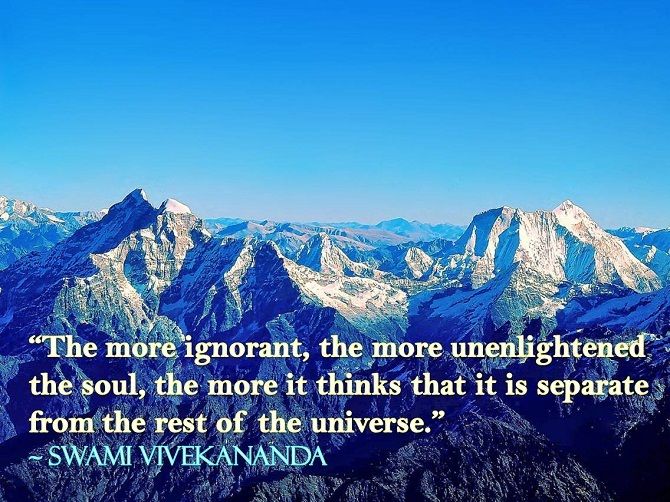Sound is a form of energy made up of a frequency (kampan shakti) or wavelengths. The Universe vibrates in its own frequency (Nadabrahmam). The mother Earth vibrates at 7.83 htz and the father Cosmos vibrates at 14 htz. Thus, the whole existence is nothing but sound. Our ancient Yogis, Siddhas and Rishis used to give mantras, the occult formula of vibrations which are nothing but a sound waves which can produce low or high sound frequencies. When uttered repeatedly with devotion, they become the source of enormous vibrations and infinite power which certain wavelengths have the power to heal, others are capable of shattering glass.
Whatever sound comes out from the mouth is the outcome of the interaction of various organs such as the wind-pipe, the tongue, the teeth, the lips etc. The different organs or parts of the mouth are interconnected with various parts of the body through tubular organs known as Nadi.
In those areas of the body, especially wherever the Chakras are located, there are lots of Ganglia (granthis, subtle energy knots). The mystics know what power is contained in each of the Ganglia. The various sounds produced through the organs of the mouth have their effect on these Ganglia; they activate the Ganglia and discharge their stored power. The wordings of the mantra are arranged on the basis of their sounds and intonations.
Mantras also can work directly upon our karma, the accumulated tendencies with which we are born.
The sounds involved in a Mantra are themselves significant, because they generate in the individual, an unusual mystic power. Mantra produces a set of frequency in the surrounding atmosphere and its force depends on the attitude of the person as well as the intensity of concentration. This frequency can attract the concerned deity (archetype being) and respond to us for our well being.
A Mantra can consist of a powerful word or a combination of words and can be used for self realization, for freedom from worries, to fulfill one's desires, to ward off the effects of malefic planets, to bring you success, peace and contentment - the range is truly vast. You can choose for yourself.
How to sit:
Sitting in position which maximizes the total effect of mantras is desirable. According to the ancient systems, the lotus posture is the best asana for meditation and for mantras. Other asanas (postures) which are recommended in order of effect for meditation or the practice of mantras are:
1. Padma Asana (Lotus pose) / Ardha Padmasana
2. Siddha Asana or Vajra Asana (Thunderbolt pose
Once you have decided upon the asana for a particular mantra, you must use the same mantra for the duration of the chanting. You can sit on the earth ( as distinct from floor), on a deer skin, a tiger skin, a wooden platform, a cotton or plant fibre mat. Synthetic materials should not be used.
For getting the maximum benefit, the mantras should be recited at designated timings.
Where to chant:
Mantras should be chanted in a quiet place. Once a place has been chosen, it should become permanent for all practical purposes.
Best time:
The best time for chanting mantras is the Brahmamuhurtam (4 a.m. / 2 hours before Sun rise). Other good times are the transition periods i.e. when night is turning into day (dawn and sunrise), when day is turning into night (twilight and sunset). You can also choose the time before going to bed. Having chosen your time, you should be regular about the hours and duration of your chanting.
Position:
If chanting mantras during the day time, you should sit facing the north or the east. If chanting mantras during the night, you should sit facing the north.
Using a Mala or Rosary:
Generally, a mala or mala of 108 Rudraksha or tulsi (basil) or sandalwood beads is used when chanting mantras. According to ancient texts, the following beads can be used for chanting specific mantras:
1. For obtaining wealth and fulfillment of desires : Mala of crystals
2. For obtaining spiritual and mystical knowledge : Mala of rudraksha
3. For obtaining both material wealth and spiritual wisdom : Mala of 54 rudraksha beads and 54 crystal beads ( 54 + 54 = 108 beads )
Mantras must be chanted or recited with unwavering devotion and motivation.
With the mala hanging over the middle, ring and index finger of the right hand, the thumb and middle finger are generally used to roll the beads. You must not cross the ' head' of the mala when rolling the beads and must revert to the head after completing a mala.
Finger-line counting ( yogic way)
Place your left thumb on the top line of your little finger and move it on each time you repeat the mantra - first to the middle line, then the lowest line, then on to the lines of the ring finger and so on. Using the three lines of the four fingers is twelve repititions; nine rounds adds up to a hundred and eight repititions.
How often:
The number of times a mantra has to be chanted is usually specified. Normally, it is considered auspicious to chant a mantra 11, 18, 54 or 108 times or in multiples of 108. Once you have fixed upon the number, you can increase it but cannot decrease it unless with the guidance of your Guru.
Source:http://indianknowledgesystemacademy.blogspot.com/
Copyright ©
Arulmigu Sri Subramaniar Alayam | Powered by Blogger
Design by NewWpThemes | Blogger Theme by Lasantha - PremiumBloggerTemplates.com | NewBloggerThemes.com







.gif)


